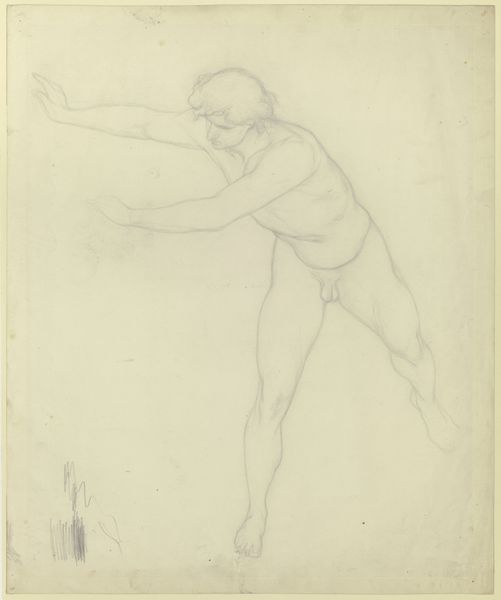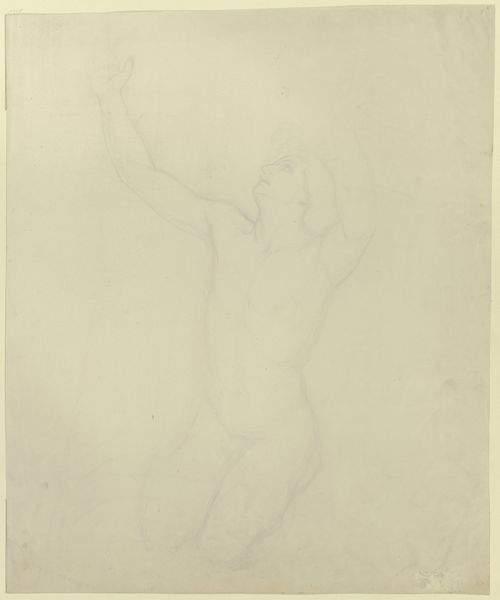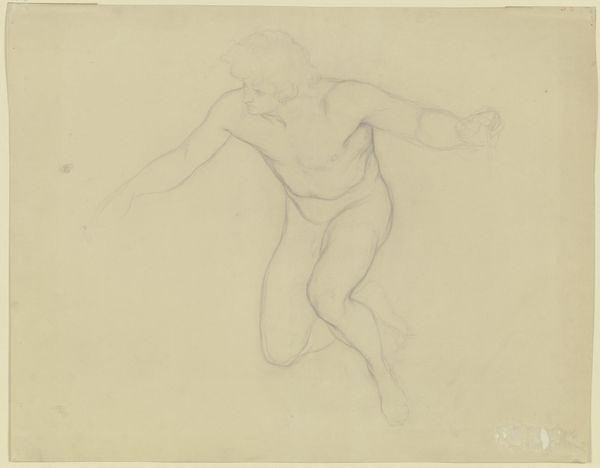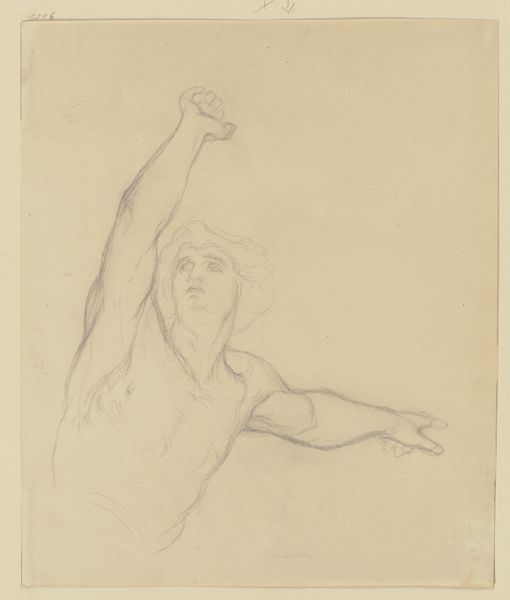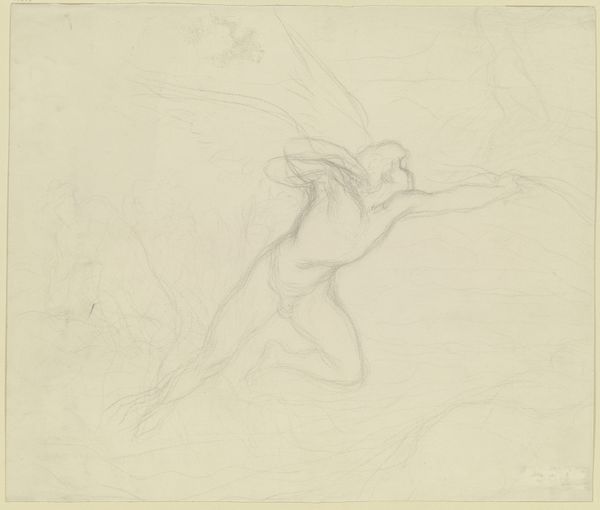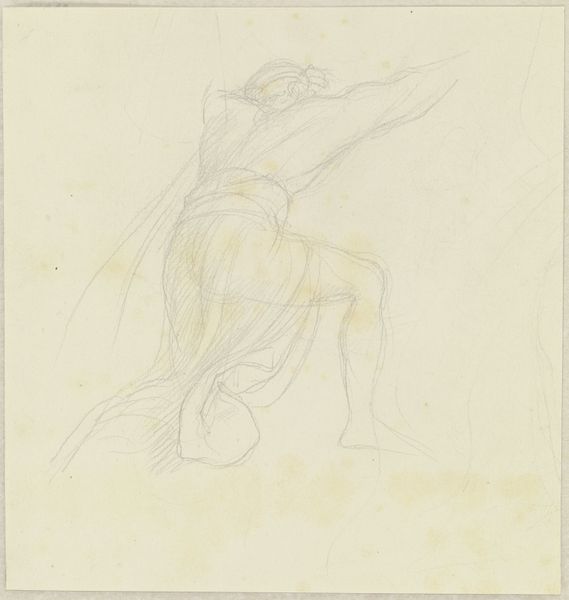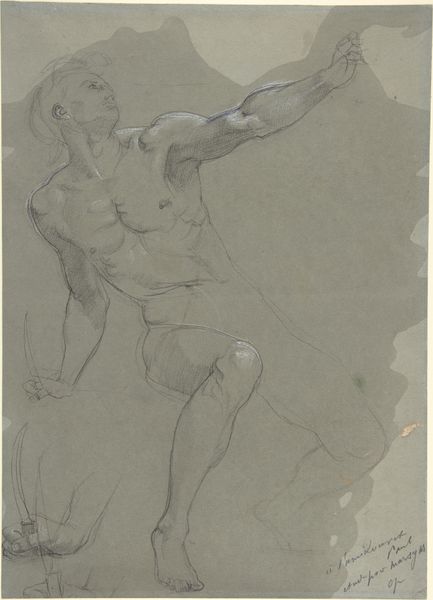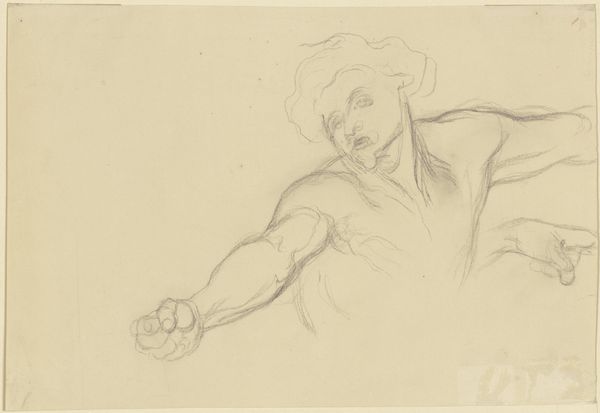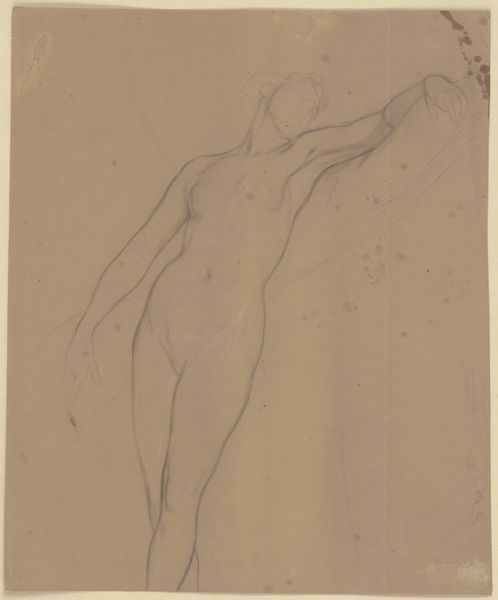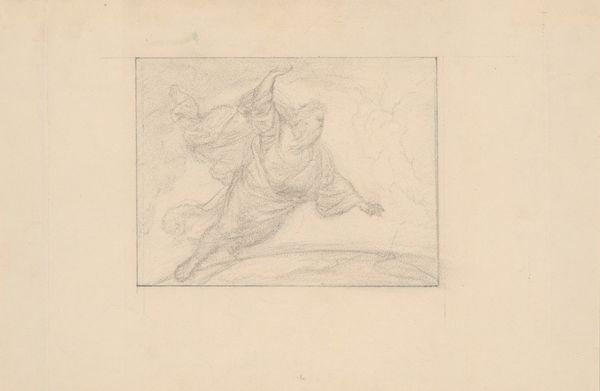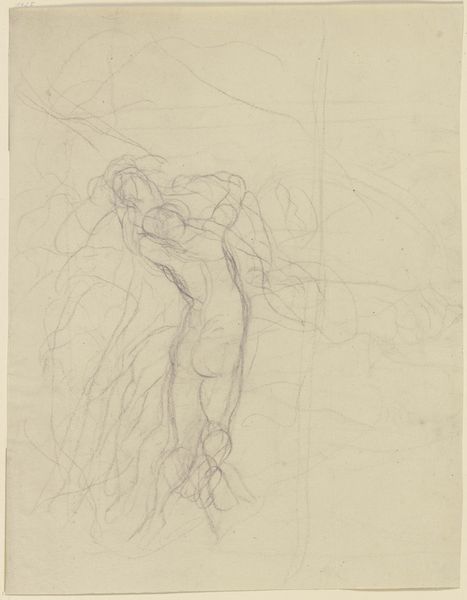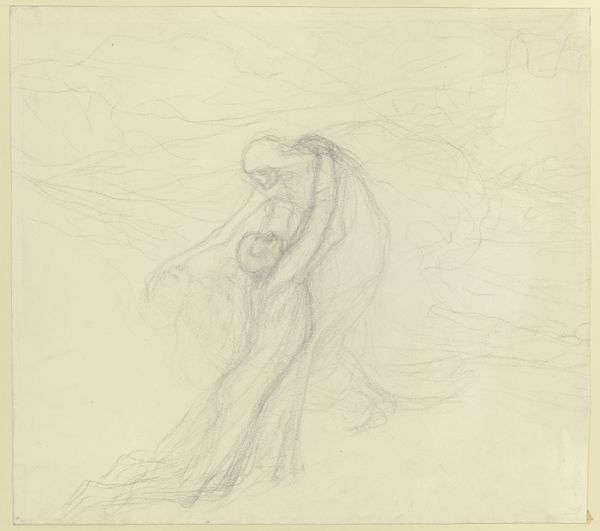
Copyright: Public Domain
Curator: Standing before us is Victor Müller’s chalk and pencil drawing, dating from around 1867, titled “Der Engel aus _Daniel in der Löwengrube_ als männlicher Akt"—that is, “The Angel from Daniel in the Lions' Den as a Male Nude.” Editor: There’s a vulnerability here. A kind of awkward grace in this study of a figure, seemingly suspended between earth and air, striving...but toward what? Curator: The medium itself speaks volumes. The chalk and pencil lend themselves to the preliminary nature of the sketch. Note the repeated lines, adjustments, and the lack of a fully rendered background. Editor: And this “Angel”--traditionally understood as a protective figure, especially within the story of Daniel—is rendered here in purely human terms, stripped bare. The usual iconographic associations of divine intervention are absent. It almost suggests that salvation, in its purest form, is intrinsically linked to human form. Curator: One might also observe that the contrapposto stance, though subtle, imbues a sense of classical elegance and the figure appears in torsion. The interplay of light and shadow accentuates the musculature, lending depth to what might otherwise be a flat study. Editor: And this depiction as a nude, male figure also recalls classical imagery. What if Müller wasn't depicting the angel as traditionally believed, but exploring the symbolic value of masculine power, even a masculine need for salvation or deliverance? I am reminded that in romanticism and 19th century art, the symbolic values of biblical art figures became complex. Curator: It's a fascinating interpretation. I appreciate how the formal elements support your theory. The linear quality almost suggests a hesitant attempt to embody something beyond representation. The anatomical correctness isn’t perfect, but it functions within a greater understanding of form. Editor: Ultimately, Müller's angel raises as many questions as it answers. Its vulnerability lingers long after you turn away from the artwork. Curator: Yes, precisely because its power emerges precisely through the subtle arrangement of formal means.
Comments
No comments
Be the first to comment and join the conversation on the ultimate creative platform.
